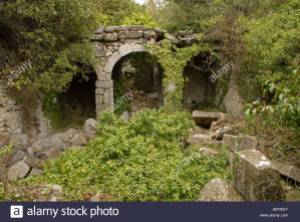I’ve mentioned this before, but I’m a very visual person. So much so, in fact, that my previous writing group, lovingly pointed out that I tended to ignore the other senses available to my characters. To this day, it’s something that lingers in the back of my mind as I’m furiously writing my scenes.
Every writer goes about inspiration differently, but I have two major art forms that I use–music and images. Don’t believe me? Check out my Pinterest stuff. I’ve got images and music for almost every major player in my series. Both form resonate with me, always have and probably always will. I could offer a bunch of reasons (I grew up playing five different instruments, my first college degree was in photo-journalism and hiding behind a lens means you don’t have to adult and talk to people) but what it boils down to is that either form will bring my imagination to life.
Music is the easier one for me to fine most times. Granted the music doubles as a muffler while the males in my household dominate the electronic gaming arenas, but it also serves as a soundtrack to over-riding emotions of whatever scene I’m in. Fight scenes get fast tempos, heavy base, and sharp notes. Emotional scenes rely on melodic chords of strings. And the sex scenes–well depending on what’s happening you can get anything from driving club music to intense orchestral soundtrack type montages, if you dare to sneak a peek. My writing play lists can go from light and happy to disturbingly dark, much like my writing.
But images, those are harder. When I write I tend to visualize an entire scene and replay it, frame by frame. When something causes my fingers to stumble, I’ll rewind, adjust, and hit replay. Again and again until it’s right–in my head and on the page. But it’s when I delve into research that images really come in to play.
Let’s take the current book I’m working on. It’s set after the world has gone to hell and humanity is barely hanging on, civilization as we currently know it, is a glorious history. Besides the in-depth research on economic impacts on society, climate changes wreaking havoc on the familiar, how fast viral diseases can sweep through a dense population leaving devastation in its wake, the emotional impact of surviving to live, what happens when the lifeblood behind our electronics is severely limited, I found myself on the hunt for what the world would look like. The buildings, the cities, the outlying areas, everything we take for granted now.
During this exploration I ran across a stunning collection of 24-year old photographer from Ohio, Johnny Joo (pronounced ‘Yo’ per his website). I spent a few years behind a lens, not anywhere near what a true photo-journalist or photographer has dedicated to the art, but enough to appreciate the talent these individuals have. Johnny specializes in what’s called urban exploration–basically he’s the Indiana Jones for urban decay. You can read all about him at his awesome blog at Architectural Afterlife.
The reason I mention Johnny is because I’ve been on the hunt for images that will breath life into my setting, and in his photos I’ve found it. When I stumbled across his blog, I spent hours (literally) going through his galleries, taking in the juxtaposition of clinging vines twisting through the remains of hospital, or the eerie living room that looks as if its owner stepped out for groceries in 1970 and just hasn’t come back. While his architectural photos were just what my writer’s mind needed, his nature portfolio was just as stunning. Not only is his talent obvious, but there is a heart there too. If you love sunflowers, you need to check out his Nature gallery under Summer, and if you decide to take some sunflowers home, know that he donates the proceeds to a beautiful cause that he details in his gallery.
I would love to share his pictures here, but I think it’s better experienced on his blog, so go there: Architectural Afterlife.
By the way, I found out this fascination with abandoned places is called Ruin Porn. The term made me giggle, but it’s fairly accurate. There is something compelling about these images of the familiar left abandoned. It’s as you can see the history and the future in one perfect moment. All the intents of the initial creation are there in the original bones, yet the truth of what lies ahead holds you in morbid fascination, leaving you unable to look away or not wonder on the what ifs. Ruin porn is a good way to describe it.
Johnny’s not the only one who documents such sites, there’s also Yves Marchand and Romain Meffre who have a fabulous series on Detroit and abandoned theaters. Well worth checking out.

